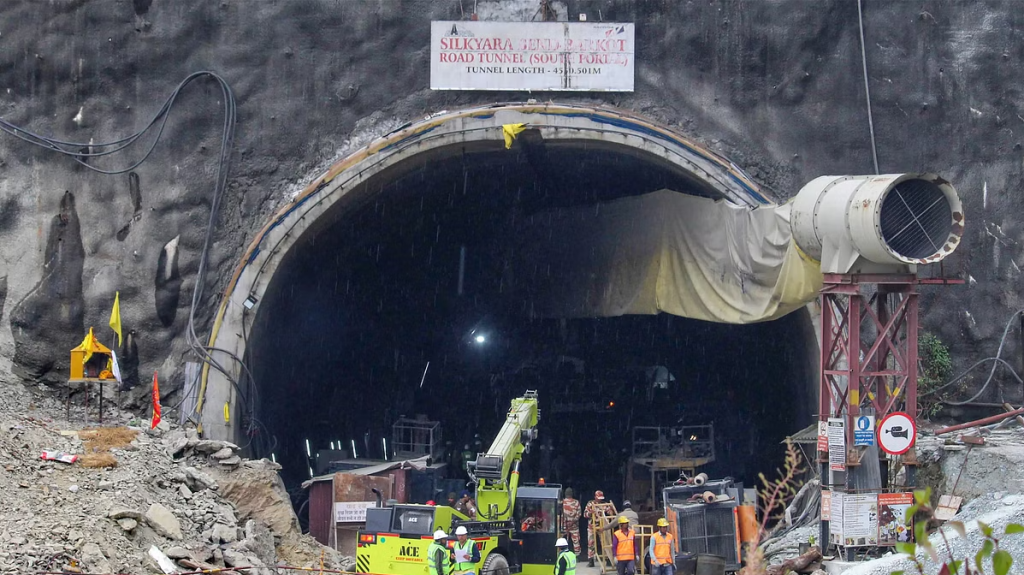Bhubaneswar: Soon after 41 workers were pulled out of the partially collapsed Silkyara tunnel in Uttarkashi Tuesday night, Union Road Transport and Highways Minister Nitin Gadkari said the accident had taught a lot and safety audit of all tunnels in the country would commence soon. He also admitted that it was very tough to work in the Himalayas and new solutions would have to be found. This would essentially mean the government’s earlier decision to expedite the 900 km Char Dham Pariyojana (project) in Uttarakhand that aims to improve connectivity to the religious pilgrimage sites of Gangotri, Yamnotri, Kedarnath, and Badrinath was not only disingenuous but it also lacked proper ground assessment. The safety aspects were thrown to the wind – despite red flags raised by geologists, environmentalists, and locals – in an apparent rush to complete the project before the approaching Parliamentary elections.
Moreover, the environment impact assessment (EIA) in the fragile Himalayan ecosystem was tweaked by dividing the project into 53 divisions (any proposed highway running beyond 100km needs environmental clearance), thus obtaining a go-ahead from the Supreme Court on the pretext of ‘national security’.
Just about a month earlier, the collapse of a massive under-construction dam in Sikkim had come as a wake-up call for the government and planners about the collaterals people have to pay for an ill-conceived and reckless infrastructural project. The outcome of the tunnel audit notwithstanding, the fact remains that escape routes in any long tunnel (Silkyara is 4.5 km long) to facilitate rescue work in case of emergencies is a norm everywhere in the world.
The Silkyara experience exposed the paucity of such features when the stranded labourers had to be pulled out manually using the outlawed ‘rat hole’ technique. This method, often used by coal mine plunderers in the North-East, was banned by the National Green Tribunal in 2014 as it is not only ‘unscientific’ but it also causes serious environmental degradation.
Geologists say that firms and agencies carrying out tunneling work in India seldom follow the prescribed safety concerns. They also tend to overlook the construction norms and design philosophy of the New Australian Tunnelling Method, which mandates escape routes in long tunnels that come in handy during disasters and emergencies – for workers during construction and motorists/users as well, later on.
Finally, clarity, transparency, and effective stock-taking should be maintained in such projects – from conception, and execution to completion. However, in the case of the Silkyara project, many of these aspects were found wanting.
Officials of the Bernard Gruppe, a Europe-based firm that provided design support to Navyug Construction, the agency engaged in the construction of the Silkyara-Barkot project, was quoted as saying that the geological conditions proved to be more challenging than predicted in the tender documents from the very start of the tunnel driving.
DEBASISH PANIGRAHI, OP
